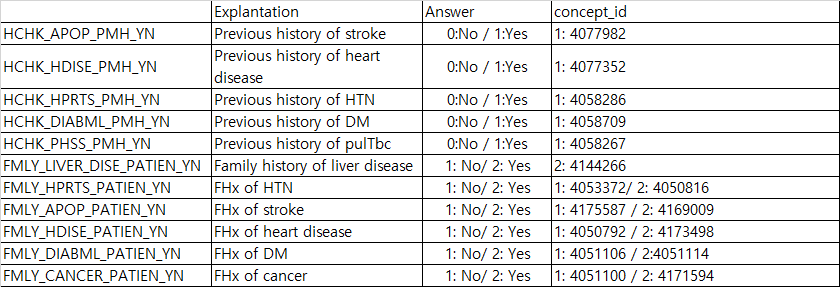Hi, all
I’m Jae Hyeong Cho, Ajou university School of Medicine
I’m converting the National Health Insurance Service-National Sample Cohort (NHIS-NSC) data to the OMOP CDM v5.0.1.
NHIS-NSC contains data from biennial health examination, including previous medical history, family history, alcohol, exercise and smoking history from self-report.
But, I’m not sure how to make observation table.
If we have answer of the patient from the question: ‘Do you have a previous medical history of stroke?’, how can I put this answer into observation table?
CONCEPT_ID : 4077982 CONCEPT_NAME : History of cerebrovascular accident DOMAIN_ID : Observation VOCABULARY_ID : SNOMED OBSERVATION_CONCEPT_ID : 4077982- Value_as_string: ‘Yes’ or ‘No’
or - Value_as_string : ‘Y’ or ‘N’
or - Value_as_string : 0 or 1
or - Value_as_concept_id : 45877994 (concept_name: ‘Yes’, domain_id: Meas Value, vocabulary_id: LOINC)
Value_as_concept_id : 45878245 (concept_name: ‘No’, domain_id: Meas Value, vocabulary_id: LOINC)
Among these, which one would be the most suitable answer?



